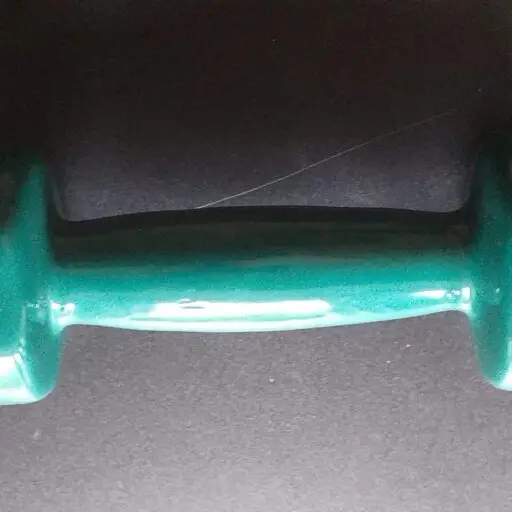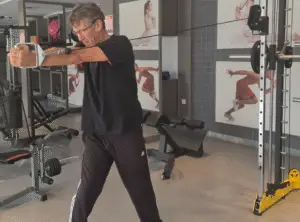All about the Cable Oblique Twist
(Back)
BENEFITS & MUSCLES WORKED: Obliques, Core, Shoulders, Upper Back, and a little Arms.
START POSITION: This is a tricky exercise to perfect, and it is often wrongly taught. The height setting of the cable is essential, as is the position of the feet, head, arms, and legs.
arms are.
NOTES: Difficulty Rating: 75%
Once the technique is mastered, the Oblique Cable Twist will bring enormous benefits.
Including Cable Oblique Twist into your ABS workout will accelerate the attainment of a 6-pack. Why? Because the oblique muscles are relatively large, they form a single mass on both sides of the body, extending from just under the chest to the waist. The obliques are often overlooked when people become overly focused on developing their central abdominal muscles. Larger muscle mass in your body will accelerate fat loss and help you get your body in shape. And yes! More muscle in one part of your body will help to burn off excess flab in other parts of your body! This is why it is essential to work hard on larger muscles such as the Quads, Glutes, and Chest.
Professional boxers must work very hard on their Obliques because they effectively form thick body armour around the sides of the rib cage. A low, hooked punch to the side of your rib cage when your obliques are underdeveloped will easily break a rib. Beginners should use low weights and high reps until they are confident that the technique has been mastered. I always recommend this approach for all exercises in the Mojoh Method. Add weights later as required.
The key to getting the correct stance for the Cable Oblique Twist is to find the best position for your feet – this should mean that during the whole twist motion, your feet remain planted in the same position, and they should not move. It is best to keep the legs relatively straight but not to lock out the knees. Another tip for maintaining correct form is to fix your eyes on the end of the cable grip (in your hands) and follow it by twisting your body and turning your head simultaneously. At the outside edge of the motion, the cable will make contact with your arm quite tightly – this is normal. Note that the grip handle is held vertically.
Control the movement firmly as you swing back and lower the weight back down – if it crashes back to its stack, then you need to shuffle sideways a little more. If the weights crash at the top of the machine when your arms are fully extended, then you need to shuffle back toward the machine slightly.
You can focus on refining this technique to have a low weight and add a very short pause to the outward position. Then you will feel the obliques working hard, and it will feel pretty good. But get the technique wrong and you will not only look like a total plonker, but you risk hurting yourself badly. Please take it slow and don’t rush to be the next.
Here is a great video that describes the form brilliantly – Technique for Cable Oblique Twist.

